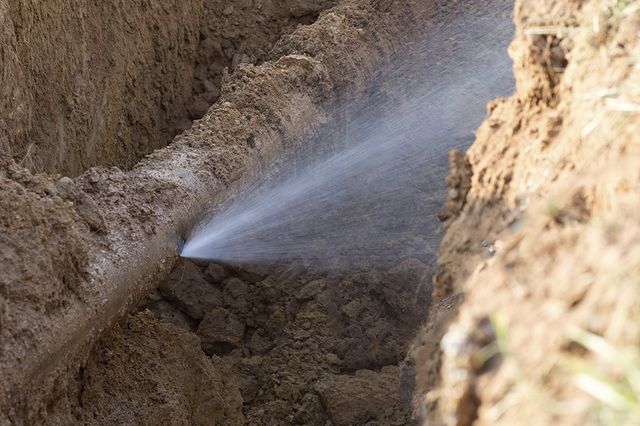
Headline |
California water agencies don’t know how much their pipes leak, UCLA report finds
Researchers recommend that state officials adopt best practices for monitoring leaks and measuring water loss
By Alison Hewitt
Originally posted in UCLA Newsroom
With California homeowners taking steps to save water during the drought, they may be dismayed to hear that a new UCLA report found that water agencies are unable to keep close track of how much their own pipes are leaking.
The report is particularly timely due to a new bill winding its way through the California State Legislature that would develop stricter rules for monitoring and preventing water loss, require water agencies to track leaks, breaks and water loss more closely by conducting annual audits, and make the audits public. Senate Bill 555 by state Sen. Lois Wolk recently passed one Assembly committee, despite resistance from the California Municipal Water Association, which lobbies on behalf of large public water utilities.
Researchers with the UCLA Institute of the Environment and Sustainability surveyed 10 water retailers in the Los Angeles region, and concluded that there’s no way to know how much water is lost to leakage and breaks. This is largely because California doesn’t require careful monitoring and water retailers do not invest enough to track water lost to leaks and breaks. The survey respondents were guaranteed confidentiality.
“It appears that most retailers don’t think of minimizing leaks and breaks as a conservation responsibility, despite the cost and scarcity of water in California,” said co-author Madelyn Glickfeld, director of the UCLA Water Resources Group. “States such as Georgia, Washington and Texas actively encourage and train water agencies in conducting water system audits, but not California.”
The report found that 6 of the 10 surveyed agencies did not distinguish between water leaks and unbilled or unauthorized water uses, and many failed to follow best practices for leak detection.
The four retailers that do measure leaks reported the amount of water lost at 3 percent to 4 percent, which the researchers described as “an improbably low percentage” compared to the best international rates of 10 percent. Israel, renowned for water conservation, reports a 10 percent water-loss rate, and experts in Australia, using more sophisticated technology than that used in California, also see 10 percent as a likely minimum leakage rate, Glickfeld said.
The technology to monitor pipes for stress points and leaks is available, said the study’s lead author Kartiki Naik, a staff research associate at UCLA’s Institute of the Environment and Sustainability.
“Los Angeles County seems to lack a proactive strategy,” Naik said. “Only three out of the 10 retailers that we surveyed used available leak-detection technology to prevent leaks. Only six had a program to replace a certain amount of old pipe each year and their maintenance schedules would take about 100-330 years to replace every pipe.”
The research shows the need for greater regulations, said Wolk, the author of the state legislation.
“The UCLA study shows that there are many more things that California water agencies, not just in Los Angeles but statewide, should be doing now to reduce water losses from leaks,” Wolk said. “That is why I have authored SB 555. As the research shows, reducing water lost from leaks and breaks in water systems provides many cost-effective benefits such as increased water supply reliability, reduced energy usage and improved infrastructure longevity.”
Because the state does not require reporting on water loss from leaks and breaks, the study authors found no reliable way to get data other than contacting water agencies individually. The study team contacted 20 of the 100 water retailers in the Los Angeles region, and received responses from half.
In general, the researchers found that large public water agencies and privately owned utilities did best at handling leaks and breaks, and were more likely to use more of the best practices to maintain pipes and water-storage systems. Small public and private water retailers largely failed to know or use best practices, or to post public information about water losses they did know about. In many cases, they appeared to lack the resources to tackle the problem, and might benefit from pooling resources, the researchers said.
“California should catch up with other states and ask water retailers to use crucial best management practices, ensuring accurate and verifiable water loss monitoring, and prescribing an effective water loss metric and maximum acceptable standard as a roadmap for water retailers,” Naik said. “In this way, customers can be assured that their water supplier is doing what they can to conserve water.”
